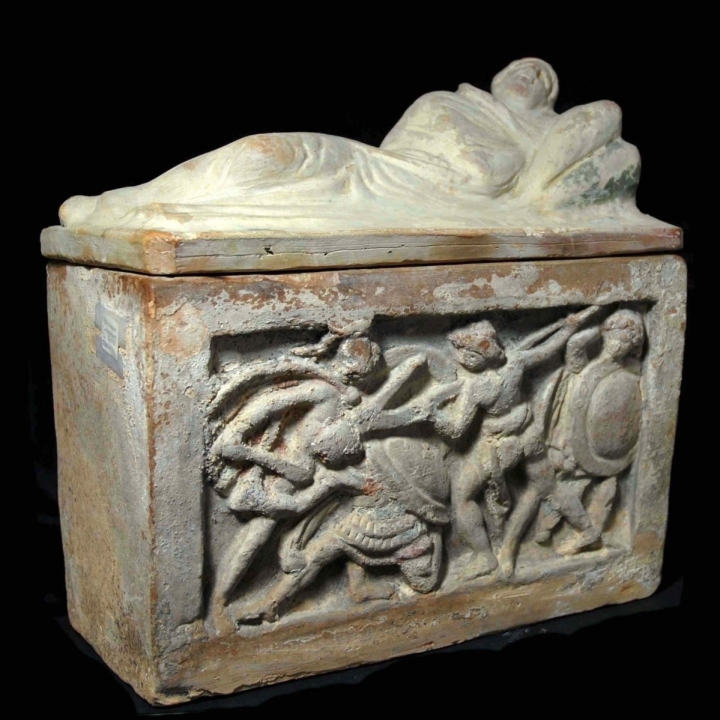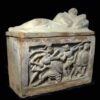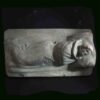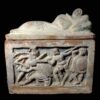Etruscan Ash Urn with the Battling Echetlus
Culture: Etruscan
Period: 2nd century B.C.
Material: Terracotta
Dimensions: 35 cm x 33.5 cm x 18.9 cm
Price: Sold
Ref: 4154
Provenance: US private collection Dr. E. B., acquired in 2002 from the collection A. R., New Jersey. There acquired in the 1980s.
Condition: Colors and inscriptions mostly faded. But the urn and lid are belonging and intact.
Description: Completely preserved ash urn with a rectangular box and a lid with the sculptural depiction of the deceased. The figure on the lid is, except for the toes and the head, completely wrapped in blankets. The head facing upward rests on two towering pillows. The ash box on top with a rectangular opening. The front features a relief with the famous depiction of the hero Echetlus fighting at the Battle of Marathon. Echtlus, a farmer, stands backwards to the viewer and stabs with his plough a kneeling warrior. Echetlus only wears a sash around his waist. The kneeling warrior tries to protect himself with his shield and swings his other arm to strike with his sword. On the left another cloaked and helmeted warrior rushing in ready to fight. Behind the furious Echetlus stands a third shielded warrior, his sword raised above his head for a strike. This scene on ash urns was particularly popular in Chiusi. Although most scholars believe that this representation shows the hero Echetlus, it has never been satisfactorily explained why this Greek legend would be so popular in Etruria. It is therefore also possible that the scene depicts an Etruscan hero from a so far unknown tale. See for the type the urn in the Metropolitan Museum of Art with the Accession Number 96.9.219a, b, as well as in the literature Theresa Huntsman, "Hellenistic Etruscan Cremation Urns from Chiusi", Metropolitan Museum vol. 49, 2014, pages 141-150. A collection note outside of the urn, three more inside.






